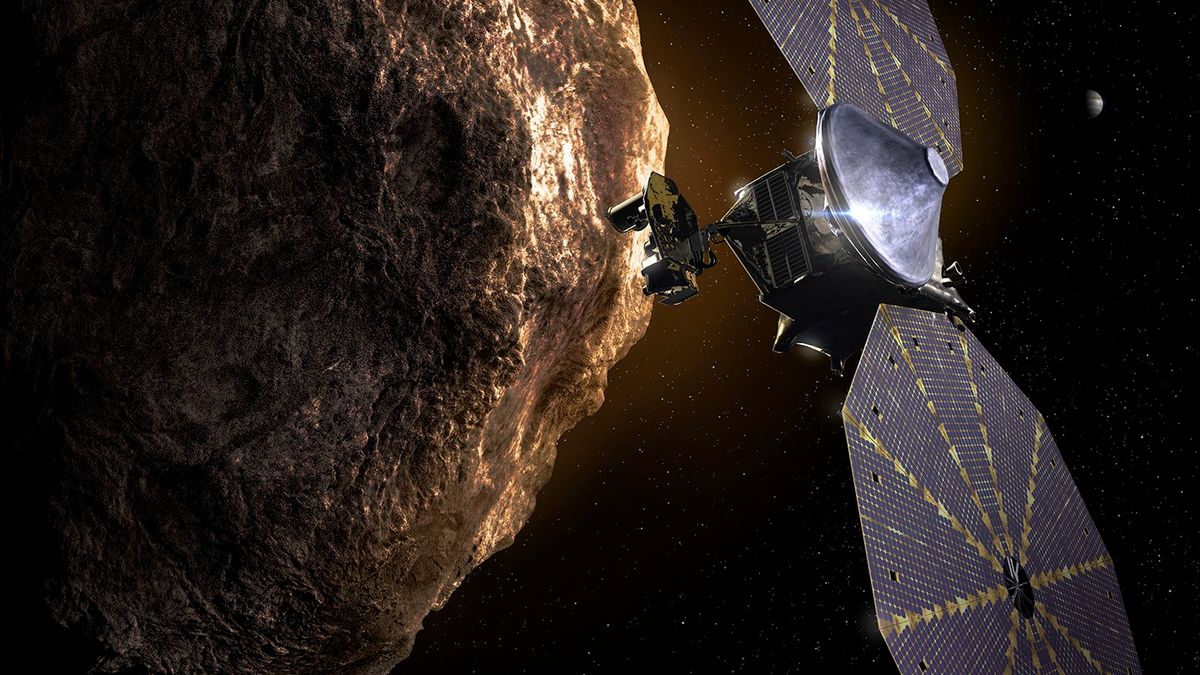Sign up for CNN’s Wonder Theory science newsletter. Explore the universe with news on fascinating discoveries, scientific advancements and more.
A team of astronomers have detected what they call the most promising signs to date of a possible biosignature, or signs of past or present life linked to biological activity, on an exoplanet named K2-18b. But the study authors, and other experts, remain cautious and have not declared a definitive discovery of life beyond our planet.
Using the James Webb Space Telescope, the team detected chemical fingerprints within the atmosphere of K2-18b that suggest the presence of dimethyl sulfide or DMS, and potentially dimethyl disulfide or DMDS. On Earth, both molecules are only produced by microbial life, typically marine phytoplankton.
A study detailing the findings was published Thursday in The Astrophysical Journal Letters.
K2-18b, located 124 light-years from Earth, could be a Hycean world: a potentially habitable planet entirely covered in liquid water with a hydrogen-rich atmosphere, said lead study author Nikku Madhusudhan, professor of astrophysics and exoplanetary science at the University of Cambridge’s Institute of Astronomy.
Madhusudhan and his colleagues first theorized the concept of Hycean worlds in 2021 after determining there may be liquid water oceans on K2-18b.
The planet is located within the habitable zone of its star, meaning that the world is at just the right temperature and distance from the star to host liquid water on its surface.
“Earlier theoretical work had predicted that high levels of sulfur-based gases like DMS and DMDS are possible on Hycean worlds,” Madhusudhan said in a statement. “And now we’ve observed it, in line with what was predicted. Given everything we know about this planet, a Hycean world with an ocean that is teeming with life is the scenario that best fits the data we have.”
Webb telescope detections
It’s possible that the molecules were produced by another unknown chemical process on the planet which does not require life.
The latest findings build on previous research by the same group of astronomers, who also detected carbon dioxide and methane within the planet’s atmosphere using Webb’s Near-Infrared Imager and Slitless Spectrograph and Near-Infrared Spectrograph instruments. The team made the new detection using Webb’s Mid-Infrared Instrument.
“This is an independent line of evidence, using a different instrument than we did before and a different wavelength range of light, where there is no overlap with the previous observations,” Madhusudhan said. “The signal came through strong and clear.”
Previous data of K2-18b, obtained with Webb’s Near-Infrared Imager and Slitless Spectrograph and Near-Infrared Spectrograph, shows an abundance of methane and carbon dioxide in the exoplanet’s atmosphere, as well as a possible detection of a molecule called dimethyl sulfide. - NASA, ESA, CSA, Ralf Crawford (STScI), Joseph Olmsted (STScI)
But Madhusudhan and his coauthors acknowledge that more data is needed before claiming direct evidence of life on another world. The team believes between 16 and 24 hours follow-up observations using Webb will make that possible.
“It’s important that we’re deeply (skeptical) of our own results, because it’s only by testing and testing again that we will be able to reach the point where we’re confident in them,” Madhusudhan said. “That’s how science has to work.”
However, other experts believe that while the results promise excitement, confirming the existence of life beyond Earth — and even deciding what type of exoplanet K2-18b is — will take much more time and data.
Astrophysicist Sara Seager, a professor of physics, planetary science, aeronautics and astronautics at the Massachusetts Institute of Technology, said independent teams have completely different interpretations of the planet itself. Seager was not involved in the new research.
“Some propose a Hycean world, others suggest a hot magma ocean — a planet with molten rock beneath a hydrogen-rich atmosphere, which is about as inhospitable as it gets — and still others see it as a mini-Neptune,” Seager said, referring to worlds that are larger than Earth but smaller than Neptune. For reference, K2-18b is 8.6 times as massive and 2.6 times as large as Earth.
Seager believes this finding, which suggests a candidate for a biosignature, “will remain in the candidate category indefinitely.”
“For nearly 100 years, astronomers have wrestled with the idea that certain gases in a planet’s atmosphere ‘don’t belong’ — that they’re so reactive they shouldn’t exist without being continually replenished, possibly by life,” Seager said via email. “This idea traces back to James Jeans in 1930, who first identified molecular oxygen in Earth’s atmosphere as a sign of life, and used similar logic to place limits on oxygen in Venus’ atmosphere. Now, with thousands of exoplanets in view, the temptation to overinterpret is strong — and some are jumping the gun. When it comes to K2-18 b, enthusiasm is outpacing evidence.”
For more CNN news and newsletters create an account at CNN.com
.png)
 German (DE)
German (DE)  English (US)
English (US)  Spanish (ES)
Spanish (ES)  French (FR)
French (FR)  Hindi (IN)
Hindi (IN)  Italian (IT)
Italian (IT)  Russian (RU)
Russian (RU) 









Comments